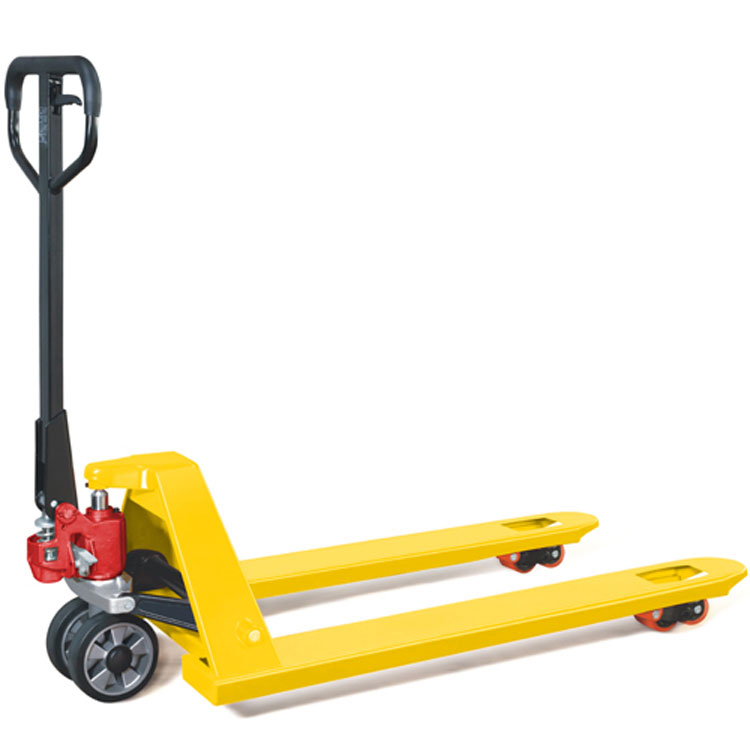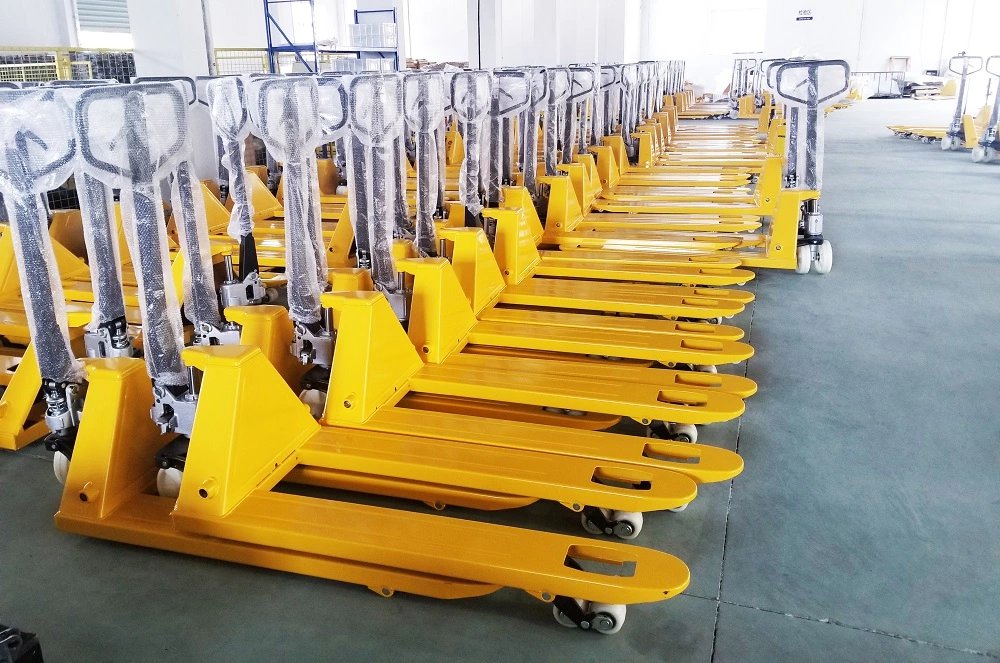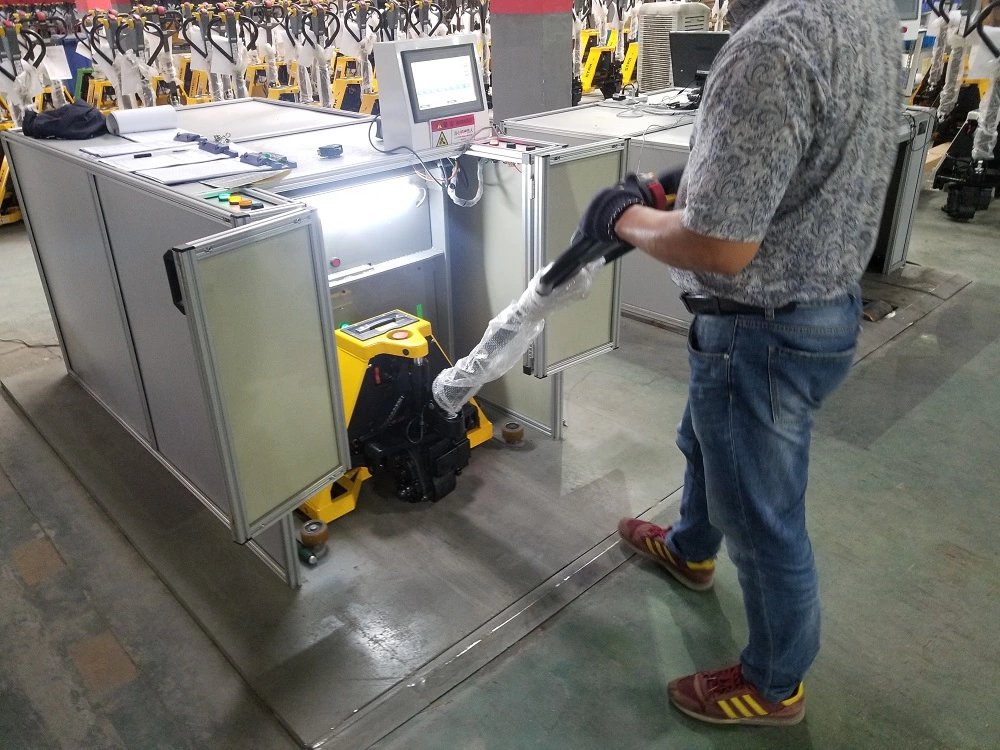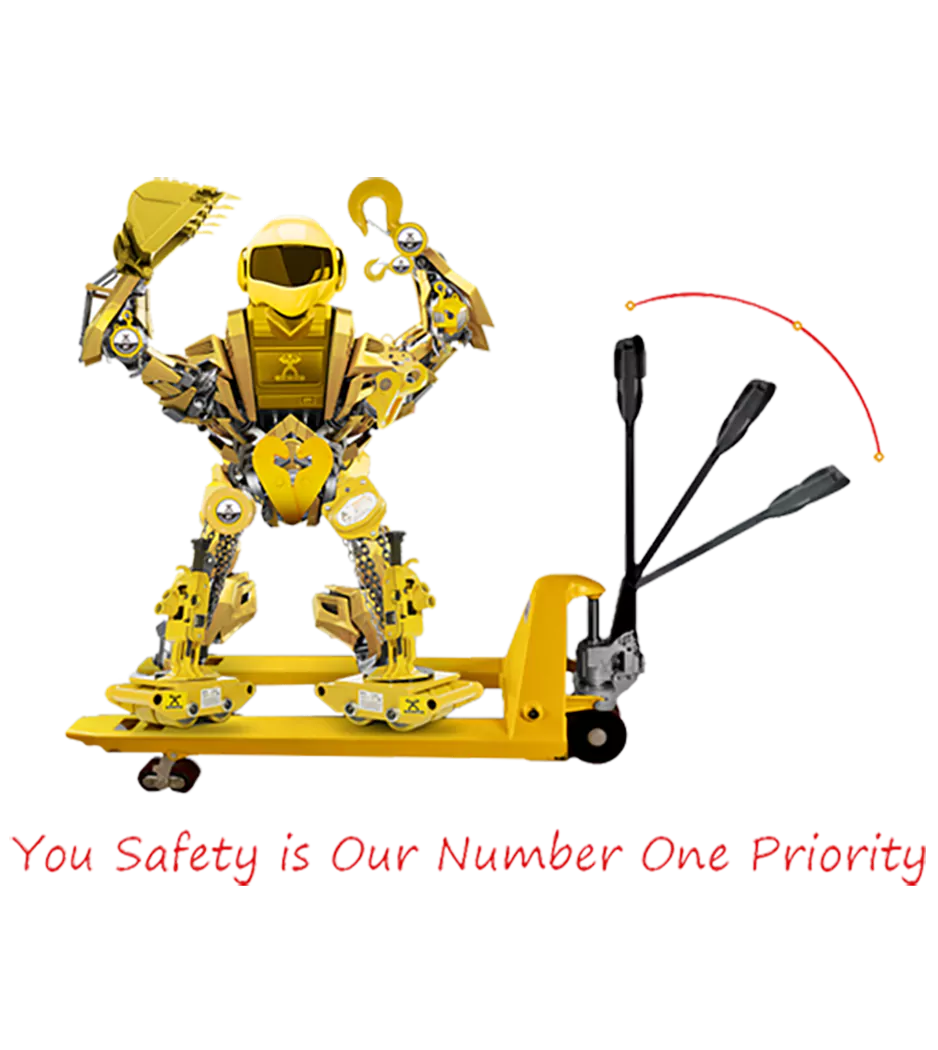Introduction to Manual Pallet Trucks
Welcome to our blog post on mastering the operation of manual pallet trucks! If you’re involved in warehouse or logistics operations, chances are you’ve encountered these handy tools before. Manual pallet trucks, also known as hand pallet trucks, are essential equipment for moving and transporting heavy loads within a facility.
In this article, we will dive into the world of manual pallet trucks and explore everything from understanding their components to troubleshooting common issues. Whether you’re a beginner looking to learn how to operate one or an experienced operator seeking tips for safe and efficient usage, this guide has got you covered.
So, grab your AC Type Hand Pallet Truck and let’s get started on becoming masters of its operation!
Understanding the Components of a Manual Pallet Truck
A manual pallet truck, also known as a hand pallet truck, is an essential tool for moving heavy loads in warehouses and other industrial settings. To operate it effectively, it’s crucial to understand its various components.
The main component of a manual pallet truck is the frame or chassis. This sturdy structure provides support and stability while carrying heavy loads. It usually consists of two parallel forks that can be lowered or raised using the hydraulic pump handle.
The hydraulic pump handle is another vital component of a manual pallet truck. By pumping this handle up and down, you can raise or lower the forks to lift or lower your load. The hydraulic system ensures smooth and controlled movements.
Located on the steering arm are the control lever and release valve. These enable you to maneuver the pallet truck with precision and ease by controlling both forward and backward movement as well as braking when needed.
Attached to the front end of the forks are load wheels, which allow for smooth movement across surfaces while supporting heavy loads without causing damage. At the back end, there are usually tandem rollers that provide stability during operation.
Additionally, some manual pallet trucks may have additional features like adjustable width forks or weight indicators to cater to specific needs in different environments.
By understanding each component of a manual pallet truck, you will have better control over its operation and be able to utilize its functionality more efficiently.
How to Operate a Manual Pallet Truck
Operating a manual pallet truck may seem daunting at first, but with a little practice and understanding of its components, you’ll be maneuvering it like a pro in no time! Here’s a step-by-step guide to help you master the operation:
1. Position the pallet: Start by aligning the forks of the pallet truck with the openings in your pallet. Ensure that it is centered and securely placed on the forks.
2. Lift the load: Engage the handle lever to lift the load off the ground. Apply steady pressure while pumping until your desired height is reached.
3. Move forward or backward: Push or pull the handlebar towards your desired direction of travel. Remember to keep a clear path ahead, avoiding obstacles and uneven surfaces.
4. Steer with precision: To turn left or right, use small steering movements while simultaneously pushing or pulling on the handlebar in that direction.
5. Lowering and parking: When you reach your destination, slowly release pressure from the handle lever to lower your load safely onto solid ground. Park in an area where it won’t obstruct walkways or traffic.
By following these steps, you can ensure efficient movement of goods using a manual pallet truck!
Tips for Safe and Efficient Usage
1.Proper Training: Before operating a manual pallet truck, it is crucial to receive proper training on its usage. Familiarize yourself with the controls, safety features, and weight capacity of the equipment.
2. Inspect the Equipment: Before use, inspect the manual pallet truck for any visible damage or defects. Check the wheels, forks, handle, and hydraulic system to ensure they are in good working condition.
3. Load Distribution: When loading items onto the pallet truck, make sure to distribute the weight evenly across both forks. This will help maintain stability during transportation and prevent tipping over.
4. Use Correct Lifting Techniques: Lift with your legs and not your back when operating a manual pallet truck. Bend your knees while keeping your back straight to avoid strain or injury.
5. Be Mindful of Surroundings: Always be aware of your surroundings when using a manual pallet truck. Watch out for obstacles such as ramps or uneven surfaces that could pose a risk of accidents.
6. Secure Loads Properly: Ensure that the load is properly secured on the forks before moving it with a manual pallet truck. Use straps or other restraints if necessary to prevent shifting during transport.
7. Follow Weight Capacity Limits: Never exceed the weight capacity specified by the manufacturer for a manual pallet truck as this can lead to instability and potential accidents.
By following these tips for safe and efficient usage of an AC Type Hand Pallet Truck, you can enhance productivity while also ensuring workplace safety.
Troubleshooting Common Issues
Manual pallet trucks are reliable tools for moving heavy loads, but like any equipment, they can encounter issues from time to time. Here are some common problems you may face when operating a manual pallet truck and how to troubleshoot them.
One issue that may arise is difficulty in maneuvering the pallet truck. This could be due to a misalignment of the wheels or excessive friction on the floor surface. To fix this, ensure that the wheels are properly aligned and lubricated if necessary. You can also try adjusting the height of the handle for better control.
Another issue you might come across is a leaking hydraulic system. If you notice oil stains or puddles around your manual pallet truck, it’s likely there is a hydraulic leak. Check all connections and seals for damage, tighten loose fittings, and replace any worn-out parts as needed.
In some cases, you may find it challenging to lift heavy loads with your manual pallet truck. This can occur if the load exceeds the weight capacity of the truck or if there is an imbalance in weight distribution. Make sure you’re not exceeding the recommended load limit and distribute weight evenly across the forks.
Additionally, uneven lifting or lowering of loads could be caused by air trapped in the hydraulic system. Bleeding out this air by pumping up and down several times while releasing slowly should resolve this issue.
If your manual pallet truck starts making unusual noises during operation, it could indicate mechanical problems such as loose bolts or worn bearings. Inspect all components thoroughly and tighten any loose fasteners to eliminate these noises.
By troubleshooting these common issues promptly and effectively, you’ll ensure smooth operation of your AC Type Hand Pallet Truck every time!
Maintenance and Care of Manual Pallet Trucks
Proper maintenance and care are essential to ensure the longevity and optimal performance of your manual pallet truck. By following these guidelines, you can keep your equipment in top shape and avoid unnecessary breakdowns or accidents.
Regularly inspect your manual pallet truck for any signs of wear or damage. Check the wheels, forks, handle, and hydraulic system for any cracks, leaks, or loose parts. If you notice anything abnormal, address it immediately before using the pallet truck.
Keep your manual pallet truck clean by removing debris such as dirt, dust, or small particles that may accumulate on the wheels or inside the mechanism. This will prevent them from interfering with smooth operation.
Lubrication is crucial for ensuring smooth movement of all moving parts. Apply lubricating oil to bearings, axles, joints, and other key components according to manufacturer recommendations. Regular greasing helps reduce friction and prevents premature wear.
Pay attention to weight limits when operating a manual pallet truck. Overloading can strain the equipment’s capacity leading to potential damage or failure. Always adhere to recommended load capacities specified by the manufacturer.
Store your manual pallet truck properly when not in use. Keep it in a dry area away from direct sunlight or extreme temperatures which can degrade its performance over time.
Consider scheduling regular professional inspections and servicing for your manual pallet truck to catch any underlying issues early on before they become major problems.
By incorporating these maintenance practices into your routine operations, you can maximize safety while extending the lifespan of your AC Typle Hand pallet truck!
Conclusion
Mastering the operation of manual pallet trucks is essential for any warehouse or industrial setting. These versatile tools are designed to make lifting and moving heavy loads a breeze, increasing efficiency and productivity in the workplace. By understanding the components, operating procedures, safety tips, troubleshooting techniques, and maintenance guidelines discussed in this article, you can become proficient in using manual pallet trucks.
Remember that practice makes perfect when it comes to operating these machines. Familiarize yourself with each component and its function before attempting to use them. Always follow proper safety protocols and take necessary precautions to prevent accidents or injuries.
Regular maintenance and care will ensure the longevity of your manual pallet truck. Clean it regularly, inspect for damage or wear, lubricate moving parts as needed, and address any issues promptly.
By mastering the operation of a manual pallet truck like the AC Type Hand Pallet Truck mentioned earlier in this article , you can streamline your material handling processes while maintaining a safe working environment.
So go ahead! Take charge of your operations with confidence by becoming an expert in operating manual pallet trucks. With knowledge and practice on your side, you’ll be able to handle heavy loads efficiently while ensuring optimal performance from your equipment.





